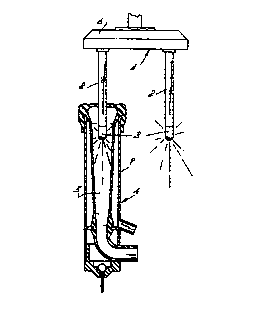Some of the information on this Web page has been provided by external sources. The Government of Canada is not responsible for the accuracy, reliability or currency of the information supplied by external sources. Users wishing to rely upon this information should consult directly with the source of the information. Content provided by external sources is not subject to official languages, privacy and accessibility requirements.
Any discrepancies in the text and image of the Claims and Abstract are due to differing posting times. Text of the Claims and Abstract are posted:
| (12) Patent Application: | (11) CA 2300419 |
|---|---|
| (54) English Title: | A METHOD OF AND A DEVICE FOR DISINFECTING A MILKING MACHINE AND/OR A CLEANING DEVICE FOR THE TEATS OF AN ANIMAL |
| (54) French Title: | PROCEDE ET DISPOSITIF POUR DESINFECTER UNE MACHINE A TRAIRE ET/OU UN DISPOSITIF DE LAVAGE DES MAMELLES D'UN ANIMAL |
| Status: | Deemed Abandoned and Beyond the Period of Reinstatement - Pending Response to Notice of Disregarded Communication |
| (51) International Patent Classification (IPC): |
|
|---|---|
| (72) Inventors : |
|
| (73) Owners : |
|
| (71) Applicants : |
|
| (74) Agent: | SMART & BIGGAR LP |
| (74) Associate agent: | |
| (45) Issued: | |
| (86) PCT Filing Date: | 1999-07-01 |
| (87) Open to Public Inspection: | 2000-01-13 |
| Availability of licence: | N/A |
| Dedicated to the Public: | N/A |
| (25) Language of filing: | English |
| Patent Cooperation Treaty (PCT): | Yes |
|---|---|
| (86) PCT Filing Number: | PCT/NL1999/000412 |
| (87) International Publication Number: | WO 2000001224 |
| (85) National Entry: | 2000-02-11 |
| (30) Application Priority Data: | |||||||||
|---|---|---|---|---|---|---|---|---|---|
|
The invention relates to a method of disinfecting at least those parts of a
milking machine and/or at least those parts of a cleaning device for cleaning
the udder and/or the teats of an animal to be milked that come into contact
with the udder and/or the teats of an animals. The relevant parts are
disinfected with the aid of a light source having a wavelength ranging between
100 and 280 nanometres.
L'invention concerne un procédé pour désinfecter au moins celles des parties d'une machine à traire et/ou au moins celles des parties d'un dispositif de lavage du pis et/ou des mamelles d'un animal à traire qui sont en contact avec le pis et/ou les mamelles de l'animal. Les parties concernées sont nettoyées au moyen d'une source de lumière possédant une longueur d'ondes comprise entre 100 et 280 nanomètres.
Note: Claims are shown in the official language in which they were submitted.
Note: Descriptions are shown in the official language in which they were submitted.

2024-08-01:As part of the Next Generation Patents (NGP) transition, the Canadian Patents Database (CPD) now contains a more detailed Event History, which replicates the Event Log of our new back-office solution.
Please note that "Inactive:" events refers to events no longer in use in our new back-office solution.
For a clearer understanding of the status of the application/patent presented on this page, the site Disclaimer , as well as the definitions for Patent , Event History , Maintenance Fee and Payment History should be consulted.
| Description | Date |
|---|---|
| Time Limit for Reversal Expired | 2004-07-02 |
| Application Not Reinstated by Deadline | 2004-07-02 |
| Deemed Abandoned - Failure to Respond to Maintenance Fee Notice | 2003-07-02 |
| Inactive: Entity size changed | 2002-07-05 |
| Inactive: Cover page published | 2000-04-13 |
| Inactive: IPC assigned | 2000-04-12 |
| Inactive: First IPC assigned | 2000-04-12 |
| Letter Sent | 2000-03-30 |
| Inactive: Notice - National entry - No RFE | 2000-03-30 |
| Application Received - PCT | 2000-03-28 |
| Application Published (Open to Public Inspection) | 2000-01-13 |
| Abandonment Date | Reason | Reinstatement Date |
|---|---|---|
| 2003-07-02 |
The last payment was received on 2002-06-21
Note : If the full payment has not been received on or before the date indicated, a further fee may be required which may be one of the following
Please refer to the CIPO Patent Fees web page to see all current fee amounts.
| Fee Type | Anniversary Year | Due Date | Paid Date |
|---|---|---|---|
| Basic national fee - small | 2000-02-11 | ||
| Registration of a document | 2000-02-11 | ||
| MF (application, 2nd anniv.) - small | 02 | 2001-07-03 | 2001-06-21 |
| MF (application, 3rd anniv.) - standard | 03 | 2002-07-02 | 2002-06-21 |
Note: Records showing the ownership history in alphabetical order.
| Current Owners on Record |
|---|
| MAASLAND N.V. |
| Past Owners on Record |
|---|
| KAREL VAN DEN BERG |
| MARTIJN OTTEN |